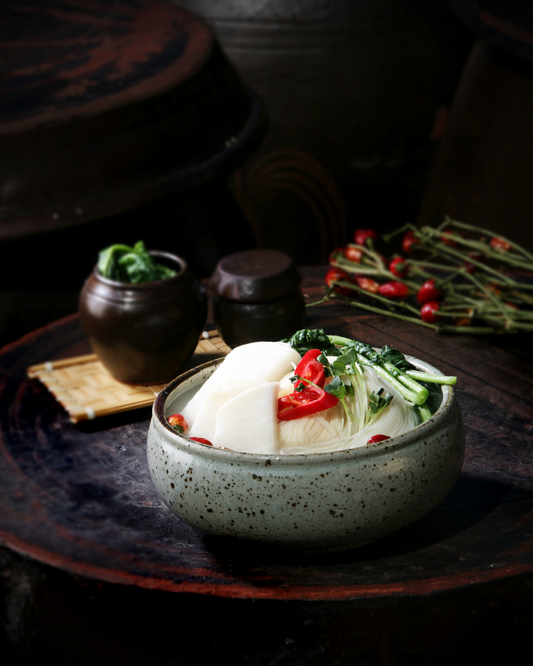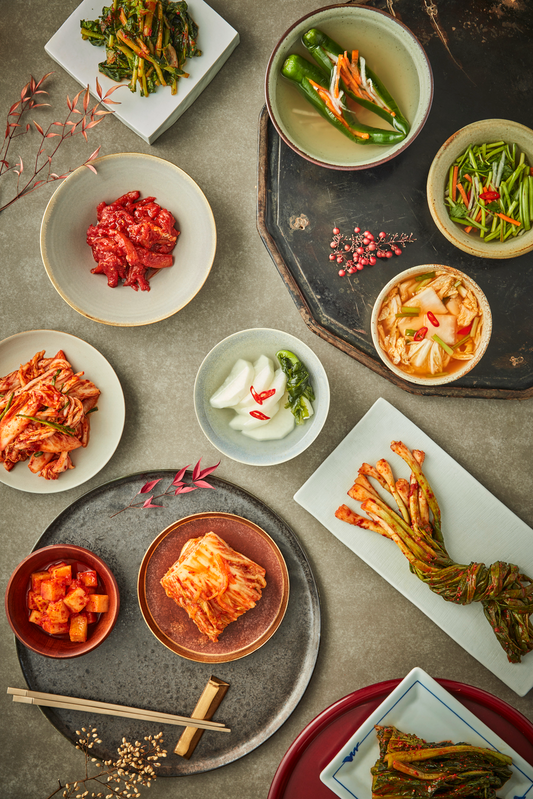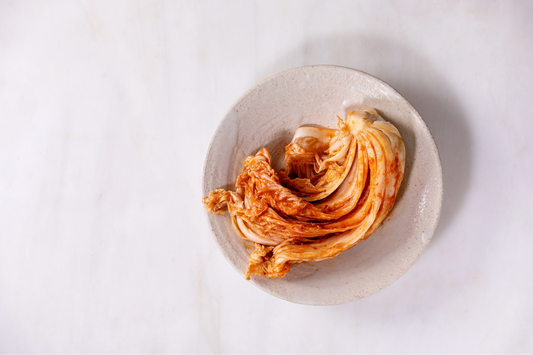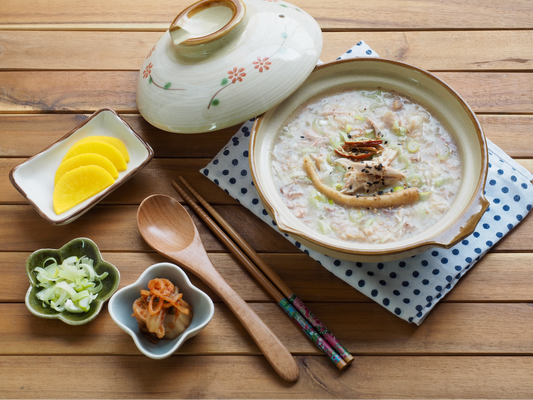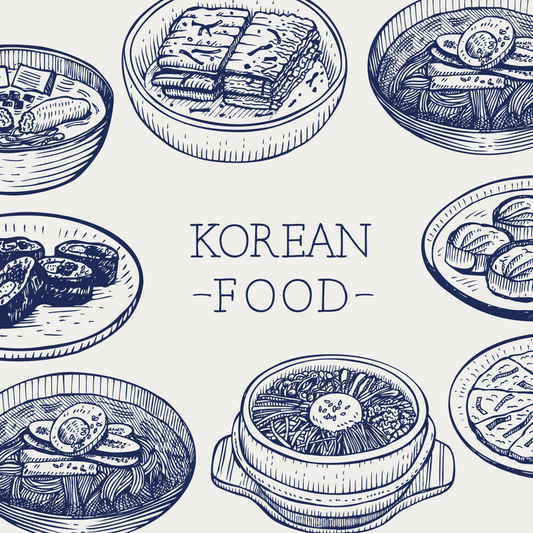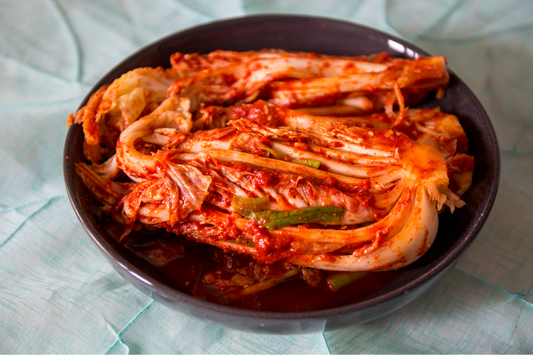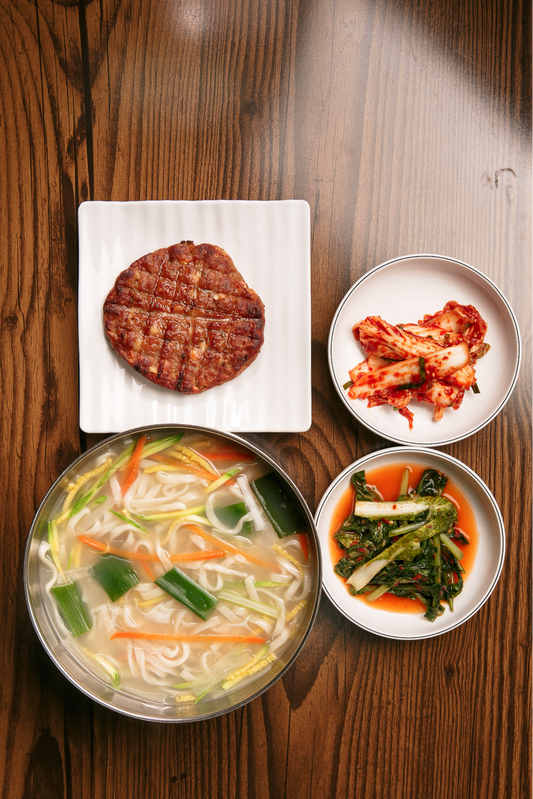Kimchi Recipes Using Seasonal Ingredients from Spring to Winter: From Kimchi Stew to White Kimchi

When was the last time you tasted the vibrant flavors of each season in one bite? The practice of making traditional Korean kimchi celebrates the year's seasonal bounty. Have you explored the variety in seasonal kimchi recipes? From spring's fresh tastes to winter's rich flavors, let's explore the world of fermented food. Here, kimchi and seasons blend perfectly, creating fresh ingredients of kimchi that goes beyond the usual napa cabbage version.
Key Takeaways
- Discover the dynamic relationship between kimchi and seasons, illustrating how each period's ingredients enhance the traditional craft.
- Learn about the comprehensive array of seasonal kimchi recipes, opening up a panorama of flavors throughout the year.
- Delve into the kimchi benefits that go beyond its savory taste, exploring its role in digestion as a celebrated fermented food.
- Appreciate the adaptability and diversity of year-round kimchi, promising a multitude of ways to appreciate this traditional dish.
- Gain insights into the process of selecting the right fresh ingredients kimchi selections to complement each season's unique character.
- Understand how traditional practices such as "kimjang" contribute to community and cultural identity while providing a bounty of traditional Korean kimchi.
- Explore the simplicity and accessibility of making different kimchi types that can be enjoyed immediately or preserved for later enjoyment.
Kimchi Recipes Using Seasonal Ingredients
Making kimchi with seasonal ingredients is more than cooking. It's about celebrating nature's variety. In the U.S., kimchi has grown popular. It's known for its health benefits and versatility. Every season brings new recipes by kimchi ingredient, thanks to available produce.
Spring introduces light, crispy kimchi with a fresh tang. Summer shifts to bold flavors, like cucumber and young radish, perfect for BBQs. Come autumn, we make Napa cabbage kimchi, rich from the sunny days.
Winter calls for hearty kimchi, like radish varieties or warm soups, using deep flavors to beat the cold. Detailed recipes offer healthy kimchi all year. They show how cabbage and radish turn into flavorful kimchi through fermentation, highlighting its cultural and health value.
"Exploring kimchi is not merely adjusting to its taste but embracing a healthier, probiotic-rich diet that resonates with seasonal eating."
By focusing on recipes by kimchi ingredient seasonally, we increase each batch's nutritional value. This rhythm enriches the practice of making kimchi, ensuring we always have healthy, homemade options.
This approach doesn't just improve meals. It showcases the sustainability and health perks of seasonal eating. Each kimchi batch brings seasonal flavors and honors Korean tradition.

Spring Ingredients and Kimchi Recipes
Spring brings vibrant, fresh spring ingredients. These are perfect for making delicious and healthy kimchi. This season, explore the art of making spring kimchi. We'll focus on three key ingredients that showcase spring's freshness.
Spring Greens Kimchi: Fresh Kimchi Recipe Using Spring Cabbage
Spring cabbage has mild, tender leaves great for spring greens kimchi. Its delicate nature allows for a quicker fermentation process, taking only 7 to 10 days. This kimchi has a crunchy texture and a refreshing taste. It's enhanced by 2-4 tablespoons of red chili flakes and ginger, making up 25% of the paste.
Paprika Kimchi: Kimchi Recipe Using Fresh Spring Paprika
Fresh spring paprika adds a splash of color to your kimchi. It brings a vibrant look and a crisp texture. The spiciness of kimchi is balanced by adjusting red chili flakes and garlic to your liking. Paprika's natural sweetness and its health benefits, such as vitamins boost, make it great for spring meals.
Carrot Kimchi: Recipe and Benefits of Kimchi Made with Fresh Spring Carrots
Spring carrots add crunch and sweetness to kimchi. Using carrots enriches your meal with vitamins and antioxidants. Finely slice the carrots and mix them with 25% red radishes for texture and flavor. Ferment for 7 to 10 days for a savory and tangy kimchi. It stays fresh for months in the fridge.
These recipes use spring ingredients to honor Korean cuisine and celebrate spring's bounty. By including these dishes in your spring cooking, you'll add delicious flavors and health benefits to your table.
Summer Ingredients and Kimchi Recipes
Summer brings lots of fresh ingredients, perfect for making special kimchi that highlights the season. Cucumber, young radish, and tomato kimchi stand out. They offer a new take on traditional kimchi, using summer ingredients for tasty sides.
Cucumber Kimchi: Kimchi Recipe Using Fresh Summer Cucumbers
Cucumber kimchi is a favorite when it's hot. It's quickly pickled and ready to enjoy right away. Using crunchy cucumbers, it's flavored with garlic, ginger, and Korean red pepper flakes. It's a cool, spicy side perfect for summer. It goes great with grilled meats or in a fresh summer salad.
Young Radish Kimchi (Yeolmu Kimchi): Kimchi Recipe Using Fresh Young Radish for Summer
Known as Yeolmu Kimchi, young radish kimchi has a sweet taste thanks to tender radishes. It's lighter and not as spicy, making it a summer favorite. It mixes scallions, red chili flakes, and garlic. This mix goes well with the strong flavors at summer BBQs.
Tomato Kimchi: Recipe and Characteristics of Kimchi Made with Fresh Summer Tomatoes
Tomato kimchi is an unusual but delicious choice. It blends the summer taste of tomatoes with kimchi spices. This combo adds a hint of sweetness to the spicy and tangy kimchi flavors. Great with pasta or bread, it puts a Korean spin on summer meals.
These variations of summer kimchi show how versatile and fun kimchi can be. They're great for adding some variety to your meals during the hot months.

Autumn Ingredients and Kimchi Recipes
As autumn arrives, it brings cool air and colorful leaves. This season is perfect for making autumn kimchi with its hearty flavors. We get ingredients like napa cabbage and flavorful seokbakji, along with seasoned radish strips (musaengchae). These dishes show the heart of Korean cooking and the best of autumn.
Napa Cabbage Kimchi (Baechu Kimchi): Basic Kimchi Recipe Using Autumn Napa Cabbage
Napa cabbage is autumn's highlight. This veggie is the main part of napa cabbage kimchi. Starting with 4.125 pounds of napa cabbage, it's chopped, salted, and mixed with garlic, scallions, and Korean red pepper. Adding overripe persimmons brings out the kimchi's taste, making a true autumn kimchi. This mix ferments for about 50 days, capturing autumn's essence.
Seokbakji (Mixed Kimchi with Radish and Cabbage): Recipe and Characteristics of Seokbakji for Autumn
Seokbakji blends radish and napa cabbage, highlighting autumn's harvest. It's seasoned with Korean chili flakes, garlic, and fish sauce, which blend as it ferments for weeks. With radish and cabbage, it's tangy and full of texture, perfect for cool weather.
Seasoned Radish Strips (Musaengchae): Kimchi Using Fresh Autumn Radish and Its Benefits
The seasoned radish strips, or musaengchae, offer a spicy but light option. Made with fresh radishes and seasoned with chili powder, garlic, and fish sauce, it's flavorful. Musaengchae boosts digestion with its fiber, making it healthy and tasty for autumn meals.
These traditional kimchi recipes use quality, seasonal items. Autumn kimchi is not just a culinary tradition but also supports health with better digestion and immunity. The careful making of each type, from salting to fermenting, celebrates the autumn harvest.
Winter Ingredients and Kimchi Recipes
Winter brings special ingredients perfect for making different kimchi types. Kimchi is a comfort food in Korea and is becoming popular in France. People there love to make and share it. This shows how much people around the world enjoy kimchi.
Dongchimi (Water-Based Radish Kimchi): Recipe for Dongchimi, a Representative Kimchi for Winter with a Cool Taste
Dongchimi is a radish kimchi made with water that's perfect for winter. It has a clear broth and crunchy radishes. It tastes refreshing and is less spicy. Dongchimi is full of vitamins and probiotics. It shows the importance of family and tradition in Korean culture.
White Kimchi (Baek Kimchi): Recipe for Baek Kimchi Using Winter Napa Cabbage
White kimchi is a gentle, non-spicy option. It's made with winter napa cabbages. It has a crisp taste, ideal for those who don't like spice. The recipe uses winter ingredients like turnips and garlic. Maangchi's guide shows how to make it rich in flavors.
Kimchi Stew (Kimchi Jjigae): Recipe and Characteristics of Kimchi Stew Using Winter Kimchi
Kimchi stew is made with sour, fermented kimchi. It's a hearty dish for winter. The stew mixes red chili powder and fish sauce for a flavorful comfort food. Kimchi's cultural significance is recognized by UNESCO. It's essential to Korean meals and can be adapted into various recipes.
FAQ
What are some benefits of making kimchi using seasonal ingredients?
Using seasonal ingredients for kimchi means it's fresher and tastes better. Seasonal produce might also be richer in nutrients, helping your body more. Plus, it encourages supporting local farmers. Every season brings different veggies into the mix, making your diet more interesting.
Can kimchi be made with ingredients other than napa cabbage?
Yes, lots of veggies can turn into kimchi. You might see cucumber, radish, or carrot kimchi. There's even tomato kimchi. Each veggie gets seasoned in the kimchi way, offering unique flavors and textures.
How does one choose the best ingredients for a specific season's kimchi?
The secret is picking what's fresh and local for the season. Think spring greens in spring or crisp cucumbers in summer. Autumn calls for hearty cabbage, and winter is great for radishes. Look for these at your local farmers' market.
What are some health benefits of eating kimchi?
Kimchi is a vitamin powerhouse with A, B, and C. The fermentation process fills it with probiotics, which is good for your gut. It's also low in calories, helping with weight management. Plus, the veggies in it, like radishes and carrots, bring in antioxidants and beta-carotene.
Can kimchi only be made in traditional onggi pots?
Not anymore. While onggi pots are great for fermentation, you can also use BPA-free plastic or glass containers. The key is ensuring an environment that lets the kimchi ferment properly.
What is kimjang and how does it relate to kimchi?
Kimjang is a Korean tradition of making kimchi together to get ready for winter. It's more than making food; it's about community, sharing culture, and keeping traditions. This event makes sure families have enough kimchi when it's harder to get fresh veggies.
How can one incorporate kimchi into other dishes?
Kimchi is very versatile. You can add it to stews, like kimchi jjigae, or use it in stir-fries and pancakes. It also goes great in pastas and can even spice up a grilled cheese sandwich. It brings extra flavor to many dishes.
Are there non-spicy varieties of kimchi for those who prefer less heat?
For sure. White kimchi doesn't have chili peppers, giving you a gentler option. It's perfect if you're not into spicy food but still want to enjoy kimchi.
How long does it take to ferment kimchi?
Fermentation time for kimchi changes depending on what you put in it, the temperature, and how you like it to taste. It could be as quick as a few days or take weeks. Cold slows fermentation down, allowing flavors to develop. Warmth speeds it up but can make it too sour if not watched.
Is homemade kimchi healthier than store-bought?
Making kimchi at home lets you pick the best ingredients and control the seasonings, cutting down on preservatives and additives. This often means it's healthier. But, some store-bought kimchis are good too, sticking to traditional methods and can be a healthy choice when you can't make it yourself.



